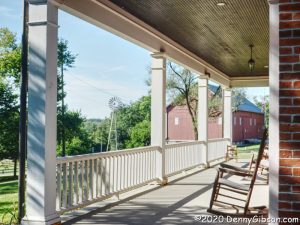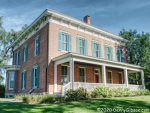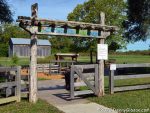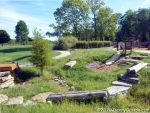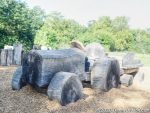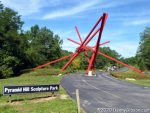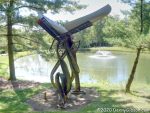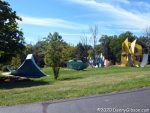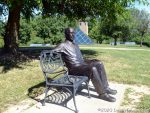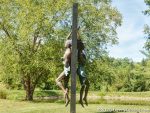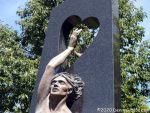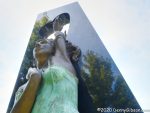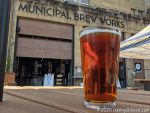 I was understandably alarmed when I first saw the news at right. However, reading beyond the headline reassured me that it was only the program planned for Fort Ancient that has been canceled and that the Sun and Earth and other heavenly bodies are to continue as is. The program was held last year and I attended. It was on a Saturday and the following article was published the next day as the regular weekly post. I am reusing it as a regular weekly post 364 days later, a day ahead of the 2020 Winter Solstice which will occur at 5:02 AM December 21.
I was understandably alarmed when I first saw the news at right. However, reading beyond the headline reassured me that it was only the program planned for Fort Ancient that has been canceled and that the Sun and Earth and other heavenly bodies are to continue as is. The program was held last year and I attended. It was on a Saturday and the following article was published the next day as the regular weekly post. I am reusing it as a regular weekly post 364 days later, a day ahead of the 2020 Winter Solstice which will occur at 5:02 AM December 21.
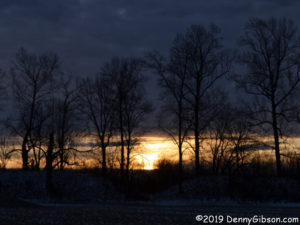 Calendars come and calendars go and Earth just keeps on turning. And it keeps on orbiting, too. The turning bit creates what we call days. The alternating periods of light and dark impact almost all life on the planet and humans adopted the day as a basic unit of measure pretty early on. What we call years comes from Earth orbiting the Sun. There was plenty of time for early humans to stare at the sky and not a whole lot to keep them from doing it. They couldn’t help but notice that things in the sky moved around. In time, some of the more observant among them realized that not all that movement was random and eventually some patterns were noted. I can’t imagine how exciting it was when some smart guy figured out that the sun popped up at the same point about every 365 days. Of course, that “about” would be very important.
Calendars come and calendars go and Earth just keeps on turning. And it keeps on orbiting, too. The turning bit creates what we call days. The alternating periods of light and dark impact almost all life on the planet and humans adopted the day as a basic unit of measure pretty early on. What we call years comes from Earth orbiting the Sun. There was plenty of time for early humans to stare at the sky and not a whole lot to keep them from doing it. They couldn’t help but notice that things in the sky moved around. In time, some of the more observant among them realized that not all that movement was random and eventually some patterns were noted. I can’t imagine how exciting it was when some smart guy figured out that the sun popped up at the same point about every 365 days. Of course, that “about” would be very important.
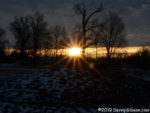 The opening photo shows the sun rising yesterday over a “gateway” in the earthen enclosure at Fort Ancient. The photo at left was taken a bit later and includes a small mound inside the enclosure in the foreground. When the mound, gateway, and sunrise align, sunset will follow sooner than on any other day of the year. This is the northern hemisphere’s Winter Solstice. It is the day when the sun is above the horizon for less time than any other day of the year, and yesterday that amounted to 9 hours, 25 minutes, and 9 seconds. Although we talk about Solstice being a day, it is technically just an instant. It is the moment when the Sun is farthest north or south of Earth’s equator. It happens twice each year and happened yesterday at 23:19 EST.
The opening photo shows the sun rising yesterday over a “gateway” in the earthen enclosure at Fort Ancient. The photo at left was taken a bit later and includes a small mound inside the enclosure in the foreground. When the mound, gateway, and sunrise align, sunset will follow sooner than on any other day of the year. This is the northern hemisphere’s Winter Solstice. It is the day when the sun is above the horizon for less time than any other day of the year, and yesterday that amounted to 9 hours, 25 minutes, and 9 seconds. Although we talk about Solstice being a day, it is technically just an instant. It is the moment when the Sun is farthest north or south of Earth’s equator. It happens twice each year and happened yesterday at 23:19 EST.
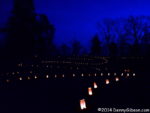 Serpent Mound, another ancient earthen structure containing solar alignments, is a little more than forty miles southeast of Fort Ancient. The serpent’s head is aligned with the Summer Solstice sunset. Body coils align with Summer and Winter Solstice sunrises. For several years, a modern event known as Lighting of the Serpent took place there at Winter Solstice. It was discontinued in 2017. The picture at right is from 2014 which is the only time I attended.
Serpent Mound, another ancient earthen structure containing solar alignments, is a little more than forty miles southeast of Fort Ancient. The serpent’s head is aligned with the Summer Solstice sunset. Body coils align with Summer and Winter Solstice sunrises. For several years, a modern event known as Lighting of the Serpent took place there at Winter Solstice. It was discontinued in 2017. The picture at right is from 2014 which is the only time I attended.
Long before they knew anything about orbits and equators, humans knew the day of Winter Solstice was special. It is the point where each successive day receives more rather than less daylight. It’s the big turnaround that will eventually lead to the warmth of spring and summer. It is clearly a day worth celebrating and it has indeed been celebrated in many different cultures in many different ways.
During their existence, humans have developed a slew of calendar systems. Several actually remain in use today, but the Gregorian calendar is the one most widely accepted. In the late sixteenth century, this started replacing the Julian calendar which had been around for all of those sixteen centuries and then some. The Julian calendar had been created by folks who calculated that a year was 365 and 1/4 days long which was a lot more accurate than an even 365. They came up with the rather clever idea of adding an extra day every four years to balance things out.
We now know that a year is 365.2422 days long. A year is the length of time it takes Earth to orbit the Sun, a day is the length of time it takes Earth to rotate, and neither is adjustable. When the Julian calendar was first adopted, the northern hemisphere’s Winter Solstice fell on December 25 but it slowly drifted away. Someone in authority thought to put an end to this nonsense by declaring December 25 the official solstice. But those non-adjustable orbits and rotations kept doing what they were doing and the official solstice and actual solstice just kept getting farther and farther apart.
The Gregorian calendar, which we have used for roughly 400 years now, put an end to that. Like the Julian calendar, it considers most years to be 365 days long but has a more involved system of “leap years” that add an extra day. The result is that over a long enough period our years will average 365.2422 days in length. Not only did the new calendar eliminate future drift, it tried to correct for some of the previous drift by throwing away ten days. The calendar’s namesake’s full-time job was as Pope of the Catholic Church. Ditching those ten days moved the solstice to December 22 which is where it had been in 325 when the church was founded. Of course, some holidays that had been tied to the official solstice (which hadn’t been anywhere near the actual solstice for some time) would continue to be celebrated on December 25.
Anyone wanting a more complete discussion of calendars, solstices, and holidays will find one here. Additional information on Fort Ancient is available here.
 I saw my first vintage base ball game right here in Ohio Village back in 2010. It was a July 4th Ohio Muffins intrasquad game. The Muffins might be the oldest vintage base ball team in the country and are definitely the first to play a regular schedule. They are currently celebrating their 40th year of existence. The big end of summer gathering of teams called the Ohio Cup Vintage Base Ball Festival was well established when I saw that 2010 game but this is my first time attending. This is the 29th festival after a COVID19 triggered cancelation last year.
I saw my first vintage base ball game right here in Ohio Village back in 2010. It was a July 4th Ohio Muffins intrasquad game. The Muffins might be the oldest vintage base ball team in the country and are definitely the first to play a regular schedule. They are currently celebrating their 40th year of existence. The big end of summer gathering of teams called the Ohio Cup Vintage Base Ball Festival was well established when I saw that 2010 game but this is my first time attending. This is the 29th festival after a COVID19 triggered cancelation last year.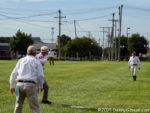
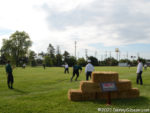
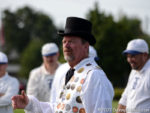 The game is played with the rules, equipment, and courtesy of the 1860s. There are no big padded gloves or other protective equipment. Pitching is underhanded with no calling of strikes or balls. The idea was to put the ball in play, get some exercise, and have some fun. Having fun today includes dressing the part by both players and umpires.
The game is played with the rules, equipment, and courtesy of the 1860s. There are no big padded gloves or other protective equipment. Pitching is underhanded with no calling of strikes or balls. The idea was to put the ball in play, get some exercise, and have some fun. Having fun today includes dressing the part by both players and umpires.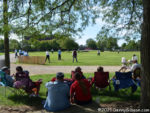 There are 25 teams participating in the festival with games taking place on four diamonds. The teams come from places as far away as Tennessee and Minnesota and their friends, families, and idle players make up a large part of the audience although there are a fair number of pure spectators like me. Note that the event is called a festival rather than a tournament. The goal, remember, is to have fun. There are no trophies and no official winner beyond the individual games
There are 25 teams participating in the festival with games taking place on four diamonds. The teams come from places as far away as Tennessee and Minnesota and their friends, families, and idle players make up a large part of the audience although there are a fair number of pure spectators like me. Note that the event is called a festival rather than a tournament. The goal, remember, is to have fun. There are no trophies and no official winner beyond the individual games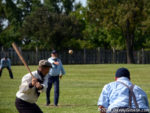
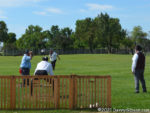
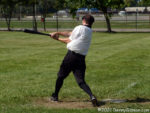 Without the need to call strikes and balls, the (there’s only one) umpire’s main job seems to be identifying foul balls.
Without the need to call strikes and balls, the (there’s only one) umpire’s main job seems to be identifying foul balls.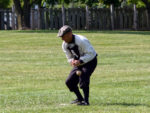
 Runs and outs can only happen after a ball is hit. Runs have always been scored only by crossing home plate. Then as now, a runner can be retired with a tag or a force-out, and catching a hit ball in flight seems to have always resulted in an out. In 1860 and in Ohio Cup Vintage Base Ball, catching a ball on the first bounce also counts as an out. I’m guessing that went away when padded gloves appeared.
Runs and outs can only happen after a ball is hit. Runs have always been scored only by crossing home plate. Then as now, a runner can be retired with a tag or a force-out, and catching a hit ball in flight seems to have always resulted in an out. In 1860 and in Ohio Cup Vintage Base Ball, catching a ball on the first bounce also counts as an out. I’m guessing that went away when padded gloves appeared.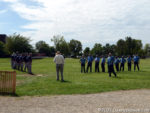
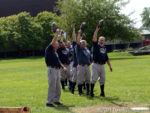
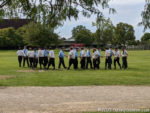 At the end of each game, the teams line up along the base paths and a member of each team gives a short speech that usually has a few jokes and a compliment or two. Then each team gives three huzzahs before they pass each other and shake hands. Yeah, that’s the way it should be done. Huzzah! Huzzah! Huzzah!
At the end of each game, the teams line up along the base paths and a member of each team gives a short speech that usually has a few jokes and a compliment or two. Then each team gives three huzzahs before they pass each other and shake hands. Yeah, that’s the way it should be done. Huzzah! Huzzah! Huzzah!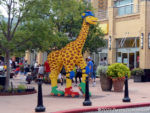
 I’d heard about an Umbrella Alley in Columbus so decided to take a look while I was there. It was rather nice but, after seeing the Umbrellas in Batesville, also rather underwhelming with a total of thirty-nine umbrellas. I thought the giraffe at the nearby Lego store was cooler.
I’d heard about an Umbrella Alley in Columbus so decided to take a look while I was there. It was rather nice but, after seeing the Umbrellas in Batesville, also rather underwhelming with a total of thirty-nine umbrellas. I thought the giraffe at the nearby Lego store was cooler.
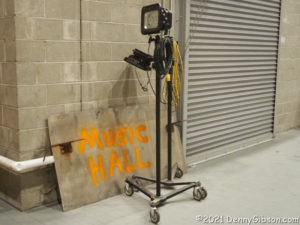
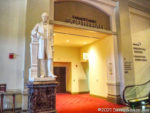
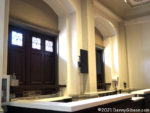

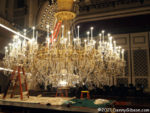
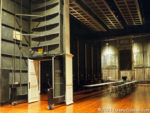

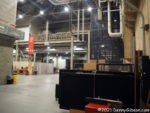
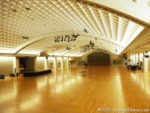

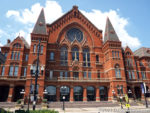
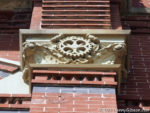

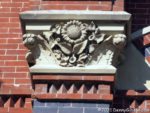
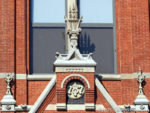

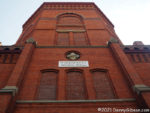
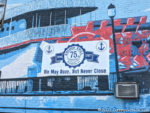
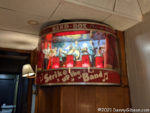
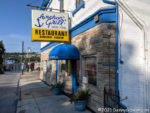
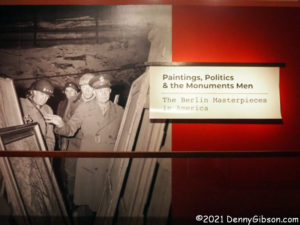
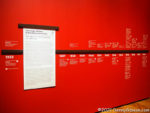

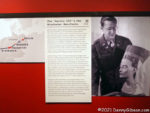




 Just like all but one of my previous books, Tracing a T to Tampa is a travelogue. Unlike any of those books, it is not about following a specific road or reaching specific destinations. It is about following a single specific trip. That trip is one made by my great-grandparents in 1920 in a Model T Ford. Throughout the 1920 journey, my great-grandmother sent a series of letters to her daughter in which town names were often included in her reports of what they were seeing and doing. Those town names allowed me to roughly reproduce their route. There are multiple reasons why my reproduction is a rough one. One is that roads have changed in the intervening years and another is that I usually had to guess at the path they took between the towns my great-grandmother mentioned. Some of those guesses are almost certainly wrong but proving it, should you be so inclined, would not be easy. Parts of the 1920 trip were clearly on the Dixie Highway and National Old Trails Road although neither is identified by name in the letters.
Just like all but one of my previous books, Tracing a T to Tampa is a travelogue. Unlike any of those books, it is not about following a specific road or reaching specific destinations. It is about following a single specific trip. That trip is one made by my great-grandparents in 1920 in a Model T Ford. Throughout the 1920 journey, my great-grandmother sent a series of letters to her daughter in which town names were often included in her reports of what they were seeing and doing. Those town names allowed me to roughly reproduce their route. There are multiple reasons why my reproduction is a rough one. One is that roads have changed in the intervening years and another is that I usually had to guess at the path they took between the towns my great-grandmother mentioned. Some of those guesses are almost certainly wrong but proving it, should you be so inclined, would not be easy. Parts of the 1920 trip were clearly on the Dixie Highway and National Old Trails Road although neither is identified by name in the letters.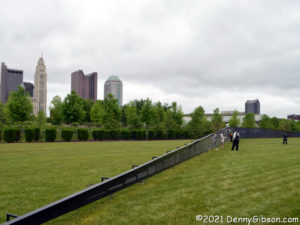

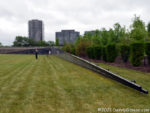
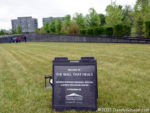
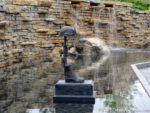
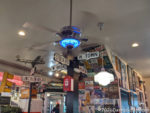
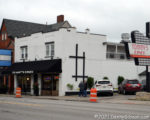

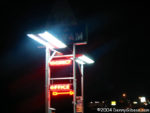
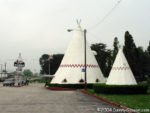

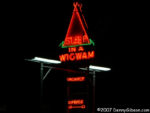
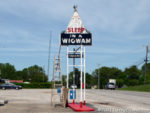
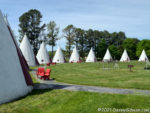
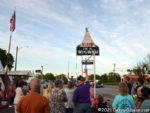
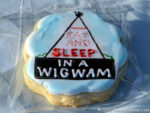
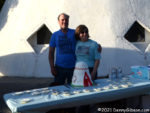
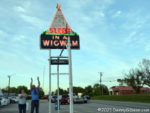
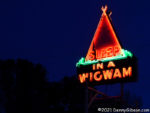
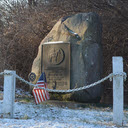
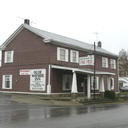
 I was understandably alarmed when I first saw the news at right. However, reading beyond the headline reassured me that it was only the program planned for Fort Ancient that has been canceled and that the Sun and Earth and other heavenly bodies are to continue as is. The program was held last year and I attended. It was on a Saturday and the following article was published the next day as the regular weekly post. I am reusing it as a regular weekly post 364 days later, a day ahead of the 2020 Winter Solstice which will occur at 5:02 AM December 21.
I was understandably alarmed when I first saw the news at right. However, reading beyond the headline reassured me that it was only the program planned for Fort Ancient that has been canceled and that the Sun and Earth and other heavenly bodies are to continue as is. The program was held last year and I attended. It was on a Saturday and the following article was published the next day as the regular weekly post. I am reusing it as a regular weekly post 364 days later, a day ahead of the 2020 Winter Solstice which will occur at 5:02 AM December 21.


